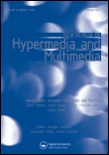
New Review of Hypermedia and Multimedia
metrics 2024
Connecting Scholars to the Future of Media Technology
Introduction
The New Review of Hypermedia and Multimedia, published by Taylor & Francis Ltd, serves as a vital platform for scholars and practitioners in the dynamic fields of computer science, media technology, and information systems. Established in 1995 and continuing through 2024, this journal explores the interplay of hypermedia and multimedia within digital environments. With an ISSN of 1361-4568 and an E-ISSN of 1740-7842, it has achieved noteworthy rankings, including a Q3 classification in Computer Science Applications and Information Systems, and a Q2 classification in Media Technology as of 2023. Additionally, it ranks 19th in Engineering Media Technology with a remarkable 70th percentile. While the journal maintains a subscription model, it performs a critical role in disseminating cutting-edge research and fostering innovation among researchers, professionals, and students alike. Aimed at enhancing understanding and application of hypermedia and multimedia technologies, this journal is an indispensable resource for those at the forefront of these evolving disciplines.
Metrics 2024
 0.33
0.33 1.40
1.40 1.70
1.70 33
33Metrics History
Rank 2024
Scopus
IF (Web Of Science)
JCI (Web Of Science)
Quartile History
Similar Journals
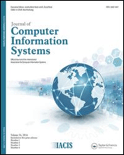
JOURNAL OF COMPUTER INFORMATION SYSTEMS
Elevating the Discourse in Computer Networks and EducationThe JOURNAL OF COMPUTER INFORMATION SYSTEMS, published by Taylor & Francis Inc, is a prestigious academic journal dedicated to the fields of computer science and information systems. With an ISSN of 0887-4417 and an E-ISSN of 2380-2057, this journal has been a valuable resource since its inception in 1995, contributing to the convergence of research until 2024. The journal holds significant status in its respective categories, achieving a Q2 ranking in Computer Networks and Communications, and a Q1 ranking in Education, demonstrating its impact and relevance to a broad academic audience. With Scopus rankings placing it in the 90th percentile for Social Sciences - Education and respectable standings in Computer Science, it serves as a critical forum for the dissemination of innovative research, methodologies, and case studies within the domains of computer information systems. Although not an open-access journal, it remains a highly cited source, attracting researchers, educators, and professionals seeking to enhance their knowledge and contribute to the evolving discourse in technology and education.
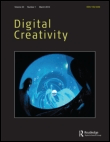
DIGITAL CREATIVITY
Unleashing the Power of Creativity in the Digital RealmDIGITAL CREATIVITY, published by Routledge Journals, Taylor & Francis Ltd, is a distinguished academic journal that serves as a vital platform for interdisciplinary research across the realms of Arts and Humanities, Computational Theory and Mathematics, Computer Graphics, and Human-Computer Interaction. Since its inception in 2005, this journal has aimed to explore the intersection of digital technologies and creative practices, making significant contributions to our understanding of digital aesthetics, interactive design, and the evolving nature of creativity in the digital age. With an impressive Q1 ranking in Arts and Humanities and notable standings in related computational fields, DIGITAL CREATIVITY appeals to a diverse audience of researchers, professionals, and students eager to engage with pioneering studies and innovative methodologies. While it presents valuable content primarily through subscription access, its credence in driving forward-thinking discussions is underscored by its ongoing relevance and commitment to advancing knowledge in a rapidly changing digital landscape. Join the conversation and contribute to shaping the future of digital creativity.

International Journal of Cartography
Transforming Spatial Data into Insightful VisualsThe International Journal of Cartography, published by Taylor & Francis Ltd, is a pivotal platform for scholars and practitioners in the fields of geography, planning, and earth sciences. With an ISSN of 2372-9333 and an E-ISSN of 2372-9341, this journal serves as a vital resource for exploring innovative cartographic methodologies and advances in spatial data visualization. Recognized in the 2023 category quartiles as Q4 in Computers in Earth Sciences and Q3 in both Earth and Planetary Sciences and Geography, Planning and Development, the journal operates at the intersection of traditional mapping techniques and modern technological developments. The journal’s research aims to foster interdisciplinary dialogue and inspire new applications of cartography within both academic and professional contexts. Although it does not currently operate on an open access model, it remains accessible to a broad audience through institutional subscriptions. With converged publication years from 2015 to 2024, the International Journal of Cartography is committed to enhancing our understanding of spatial relationships and promoting innovative cartographic practices on a global scale.

Journal of Organizational and End User Computing
Innovating Insights into User-Centric Computing PracticesThe Journal of Organizational and End User Computing, published by IGI Global, is a leading peer-reviewed outlet dedicated to exploring the intersection of organizational practices and user interfaces within the digital realm. With a robust ISSN of 1546-2234 and an E-ISSN of 1546-5012, the journal has established itself as a crucial resource for scholars and practitioners in the fields of Computer Science Applications, Human-Computer Interaction, and Strategy and Management. Recognized for its quality, the journal attained Q3 status in Computer Science Applications and Human-Computer Interaction, and Q2 status in Strategy and Management in 2023, reflecting its esteemed position in academic rankings. Operating from the heart of the United States, the journal has converged its focus from 2004 to 2024, making it a reliable source for cutting-edge research and industry trends. Although it does not offer open access, the Journal of Organizational and End User Computing remains an invaluable repository of knowledge, perfect for researchers, professionals, and students seeking to advance their understanding of organizational structures and user engagement in computing environments.

Journal on Multimodal User Interfaces
Pioneering Research in Multimodal User EngagementJournal on Multimodal User Interfaces, published by Springer, serves as a vital platform for scholarly exchange in the rapidly evolving fields of Human-Computer Interaction and Signal Processing. Established in 2008 and continuing through 2024, this journal maintains a high profile in academia, currently ranking in the Q2 category for both fields, indicating its significant contribution to ongoing research and practical applications. With its Scopus rankings placing it at #34 in Signal Processing and #49 in Human-Computer Interaction, it is recognized for publishing high-quality, impactful research. Although it is not an Open Access journal, the Journal on Multimodal User Interfaces remains accessible through institutional subscriptions. Researchers, professionals, and students will find the journal an essential resource for advancing knowledge and fostering collaboration in multimodal interaction technologies, which are crucial for enhancing user experience and developing intelligent systems.

Multimodal Technologies and Interaction
Pioneering Research in Multimodal Technologies.Multimodal Technologies and Interaction, published by MDPI since 2017, is an esteemed open-access journal based in Switzerland, dedicated to the exploration and advancement of innovative multimodal systems that enhance user experience across various digital platforms. With its commitment to disseminating high-quality research in diverse areas such as Computer Networks and Communications, Human-Computer Interaction, and Neuroscience, the journal has rapidly established itself within the academic community, achieving a commendable position in Scopus rankings including Q2 in both Computer Networks and Communications and Computer Science Applications. As an essential resource for researchers, professionals, and students alike, Multimodal Technologies and Interaction fosters interdisciplinary dialogue and supports the development of cutting-edge technologies, ensuring that advancements in multimodal interaction are accessible to a global audience. Scholars can benefit from its Open Access format, allowing unrestricted access to influential studies that shape the future of technology and interaction design.

IADIS-International Journal on Computer Science and Information Systems
Exploring the Frontiers of Computer Science and Information SystemsIADIS-International Journal on Computer Science and Information Systems is a prominent platform dedicated to advancing research and knowledge in the field of computer science and information systems. Published by IADIS, this journal aims to disseminate innovative findings and theoretical advancements that address contemporary challenges and trends in technology. The journal fosters a rigorous peer-review process, ensuring that only high-quality research is shared with its audience, which includes researchers, professionals, and students from around the globe. Although the journal is not currently open access, it serves as a vital resource for those looking to deepen their understanding of the evolving landscape of computer science. The ISSN of this journal is 1646-3692, and it boasts a strong commitment to promoting interdisciplinary communication and collaboration in the realm of information technology, making it an essential read for anyone looking to stay at the forefront of this fast-paced field.
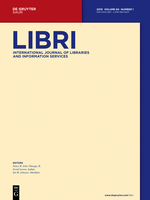
LIBRI-International Journal of Libraries and Information Studies
Unveiling the Dynamics of Information ManagementLIBRI - International Journal of Libraries and Information Studies, with ISSN 0024-2667 and E-ISSN 1865-8423, is a premier academic publication in the field of library and information science. Published by the esteemed Walter de Gruyter GmbH in Berlin, Germany, this journal has carved a distinguished place in academic discourse, earning a Q2 ranking in 2023 within its category, which underscores its impact and relevance to the community. With a comprehensive history spanning from 1950 and ongoing coverage until 2024, LIBRI provides a platform for rigorous research and innovative studies that advance the understanding of libraries and information systems globally. Researchers, professionals, and students are invited to engage with its diverse articles that cover a plethora of topics relevant to today’s information landscape. Although not an open-access journal, its contributions are valuable for those seeking to enhance their knowledge and stay updated in a rapidly evolving field.
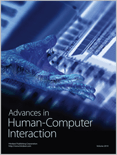
Advances in Human-Computer Interaction
Empowering researchers to shape tomorrow's technology.Advances in Human-Computer Interaction is a premier peer-reviewed journal published by HINDAWI LTD, dedicated to the exploration of cutting-edge research and innovation in the field of Human-Computer Interaction (HCI). With an ISSN of 1687-5893 and an E-ISSN of 1687-5907, this Open Access journal has been contributing to the scientific community since 2008, offering unrestricted access to critical findings and advancements. Based in Egypt with an address at ADAM HOUSE, 3RD FLR, 1 FITZROY SQ, LONDON W1T 5HF, ENGLAND, it occupies a notable position in the academic landscape, reflected in its 2023 Scopus ranking of Rank #57/145 and a 61st percentile in the Human-Computer Interaction category. As a Q3 journal, it plays a crucial role in disseminating research that bridges the gap between humans and technology, providing valuable insights for researchers, professionals, and students pursuing expertise in this dynamic field. The journal’s converged years from 2010 to 2024 signify its ongoing commitment to advancing knowledge and fostering collaboration among HCI experts worldwide.
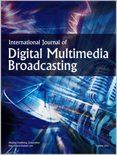
International Journal of Digital Multimedia Broadcasting
Transforming the Landscape of Communication StudiesThe International Journal of Digital Multimedia Broadcasting is a leading scholarly platform dedicated to the interdisciplinary exploration of digital multimedia broadcasting, published by HINDAWI LTD. With an ISSN of 1687-7578 and an E-ISSN of 1687-7586, this Open Access journal has made significant strides since its inception in 2008, ensuring wide accessibility and dissemination of research. Based in the United States, at Adam House, 3rd Flr, 1 Fitzroy Sq, London W1T 5HF, England, the journal covers a range of topics relevant to Communication, Electrical and Electronic Engineering, and Media Technology, boasting impressive Scopus rankings that highlight its influence in these fields. As part of the Q3 category in Communication and Electrical Engineering, and Q2 in Media Technology for 2023, the journal serves a vital role in fostering the understanding of technological advancements and their applications in multimedia broadcasting. Researchers, professionals, and students are encouraged to contribute to and benefit from the journal's rich repository of knowledge, paving the way for innovative developments in this dynamic industry.